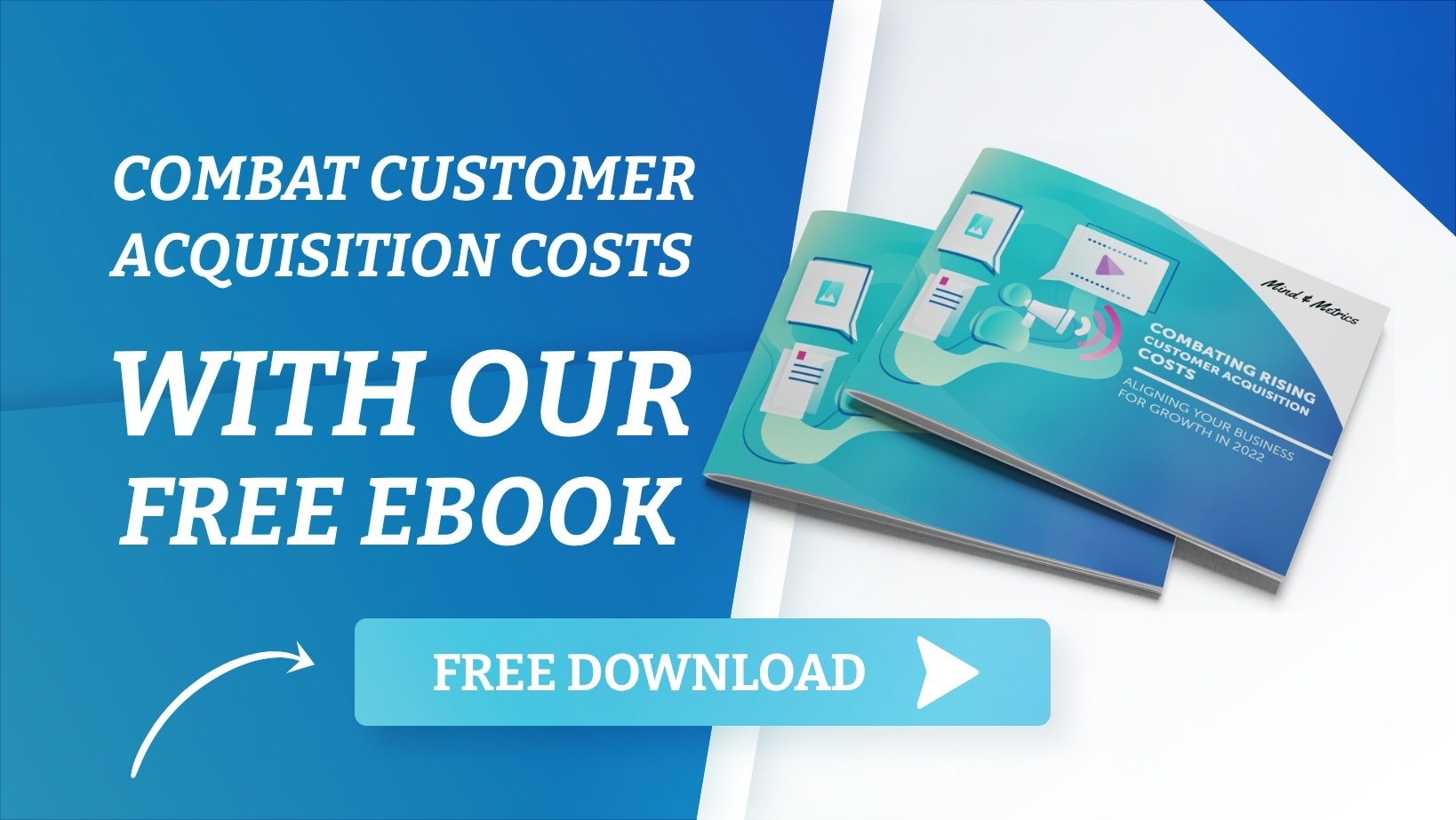Experience firsthand how Mind & Metrics + Supered.io can help your business streamline execution, eliminate unnecessary back-and-forth, and ensure AI accelerates growth—without the chaos.
Sustainability Trends in Business: Are Consumers Buying Eco Products?
Sustainability used to be a bonus for brands rather than a requirement, but consumers’ growing concerns over climate change and the environmental impact of industry and production are making planet-friendly practices an increasingly important factor in many people’s purchase decisions. Despite rising inflation and the higher price point compared to conventionally-marketed goods, sustainable products are continuing to take more market share. This indicates that ethics are a larger factor in purchase habits than ever before.
Consumers, especially those in the Millennial and Gen Z age range, are tired of flimsy climate pledges, greenwashing, and wasteful products. They want to buy greener products, and most say they’re willing to put their money where their mouth is. However, purchase intent does not always ultimately translate to actual purchase habits. Companies may be hesitant to adopt sustainable practices due to concerns about price or doubts about ROI. But recent surveys have shown a clear shift in spending habits towards products with environmentally conscious claims, indicating that an investment in sustainable practices may be an effective way for businesses to attract more buyers - as long as their messaging is truthful.
Let’s look into how consumer demand for sustainable products has grown in recent years, the environmental claims that are most sought-after by consumers, and the types of eco-friendly messaging that make the biggest impact.
Skip to:
Growing demand for sustainable products
Who cares about sustainability?
Demand vs. purchase habits
Barriers to sustainable purchase intent
What sustainability claims resonate with consumers the most?
Is it worth it to be an eco-friendly business?
Demand for sustainable products continues to grow
Concerns about climate change are on the rise. In 2022, Gallup published the results of an annual survey of the American public’s sentiment about the environment, with data dating back to 2001. The years between 2016 and 2022 have seen consistently elevated concerns about the quality of the environment, compared to the first 15 years the survey was conducted. And according to the Pew Research Center, as of August 2023 a majority of Americans say that global climate change is affecting their local community.
Anxieties surrounding climate change have fueled an increased interest in sustainable brands, products, and product packaging. The past few years have seen a 71% rise in online searches for sustainable products globally. And a 2020 McKinsey survey found that 55% of respondents were “extremely” or “very” concerned about the environmental impact of product packaging. Their concerns about the effect product packaging is having on the environment span a broad range, from water pollution to deforestation, and no one single concern stands out as significantly more important than the rest. So companies looking to cultivate a sustainable image won’t benefit from targeting one climate concern over another.
In that same McKinsey survey, 60% of respondents stated they were willing to pay more for a product with sustainable packaging. And about 35% of them said they’d buy sustainable products if they were more readily available in stores, and clearly labeled as eco-friendly.
Who cares about sustainable brands?
Millennials and members of Gen Z care more about a brand’s sustainable practices than the generations before them. It’s important for organizations to resonate with younger generations, because they’ll soon move in as the age range with the most purchasing power.
A huge factor in most consumers’ purchasing decisions is whether a brand can be considered trustworthy. According to Harvard Business Review, while people of all generations use product quality and consistency of service to determine whether a brand is trustworthy, Gen Z and Millennials tend to consider the level of empathy, humanity, and transparency shown in a brand’s messaging as well. When Millennials and Gen Z perceive a brand’s messaging as prioritizing transparency, they’re 20% more likely to choose that brand over its competitors.
While the younger generations are more likely to lean towards purchasing sustainable products, the increase in demand for eco-conscious practices has crossed the generational divide. According to 2021 survey data, a higher number of Boomers, Gen X-ers, and Millennials expressed a preference for sustainable products in 2021 than they did in 2019. Regardless of when they were born, consumers of every age seemingly want to make more sustainable choices.
Brand social responsibility in general is becoming increasingly important to all generations. According to a report by the Economist, more and more consumers now believe that businesses have an obligation to make a positive impact on society. In fact, 65% of consumers believe that brands bear as much responsibility as governments to enact or aid positive social change.
Consumers expect more from brands, and organizations that lag behind in their efforts to utilize planet-friendly practices may lose their competitive advantage. But the question remains: Though consumers want to purchase sustainable products, do they actually end up following through? Does the extra cost of sustainability pay off in the end for brands?
Does demand for sustainable products equate to actual changes in purchasing habits?
While the general consensus among consumers is that they’d rather buy sustainable products if they’re available, issues such as cost, availability, and confusion about what common sustainability claims actually indicate can stand in the way of purchases. In addition, someone expressing intent to perform an action and actual follow-through of said action are two different things. So is the intent to buy eco-conscious products a firm commitment or just an idealistic thought?
Let’s look at what qualities consumers seek out when they’re choosing between products. The aforementioned 2020 McKinsey study found that price, quality, and brand play a much more important role in purchasing decisions than social or environmental impact. Ultimately, it’s highly unlikely that environmental concerns will ever be the number one driver behind purchasing decisions in the vast majority of the population. However, environmental impact is still on many people’s minds; 55% of survey respondents say they’re “extremely” or “very” concerned about how product packaging is affecting the environment.
A study by McKinsey and NielsenIQ, published in 2023 with data from 2017-2022, sought to understand whether consumer packaged goods (CPG) companies benefit financially from making environmental, social, and governance (ESG) related claims. CPG companies sell goods that consumers tend to repurchase regularly, such as food, beverage, personal care, and household products. The results of the study, which included data from 44,000 brands, showed a “clear and material link between ESG-related claims and consumer spending”.
Over the course of the five-year study, products with ESG-related claims saw 28% cumulative growth, while products without those claims averaged 20% growth. In terms of their compound annual growth rate (CAGR), ESG products had a 1.7 percentage point advantage over products that didn’t make ESG claims.
The data is clear: While intentions don’t lead to 100% follow-through, consumers are definitely putting their money where their mouth is. Despite inflation and reduced overall consumer spending, sustainable products took up 0.3% more market share in 2022 compared to 2021, comprising 17.3% of all purchases. This shows that consumers are still willing to invest in sustainable products even with their higher average price premium.
When it comes to fashion, however, there is a more significant intention-action gap. Though Gen Z and Millennials are the generations most focused on sustainability, they’re also the largest consumers of fast fashion - especially Gen Z. Cost is likely the biggest driver; with limited purchasing power, Gen Z may be unable to afford to consistently buy products that match their values. However, experts predict that within the next decade, as members of Gen Z move up in their careers and gain increasing access to disposable income, sustainability will become “table stakes” for clothing brands.
What are the most common issues preventing consumers from purchasing sustainably?
Cost is undoubtedly one of the most significant factors preventing consumers from buying sustainable products, especially when combined with consumers’ concerns about product efficacy and confusion surrounding ESG claims. GfK data shows that 53% of U.S. consumers think sustainable products are too expensive, and 37% think that green products carry red flags - i.e, products marketed as environmentally sustainable don’t work as well as traditionally marketed products.
According to the 2023 Business of Sustainability study by PDI, as many as 78% of U.S. consumers have reported that they want to buy from eco-friendly companies, but don’t know how to differentiate them from traditional companies. Even if a product is marketed as earth-friendly in some sense, the exact benefits offered by the product are not always clear to shoppers. Many consumers report reading product labels or conducting online research to evaluate the sustainable claims made by companies.
Simply stating a product is eco-friendly or slapping a “B Corp Certified” graphic on the label without further context doesn’t appear to be enough to get consumers to buy in all cases. Companies with transparent messaging and labeling can capitalize on a gap in the market.
What sustainability claims resonate with consumers the most?
The 2023 McKinsey and NielsenIQ study compared how products with different types of ESG claims performed. While no one claim in particular stood out as a clear winner, products with the least commonly used claims seemed to draw more attention. Products with less common claims like “vegan” or “carbon-zero” saw 8.5% higher sales than similar products without those claims, while products with the most common claims like “environmentally sustainable” saw significant but smaller growth over their peers.
The wording of product labels and marketing materials is important as well, and there’s no one right way to do it. The messaging that will be the most effective depends heavily on a brand’s target market. Generally, though, people are creatures of habit and community, which is why using “social influence” tactics in marketing can be helpful. Messaging that appeals to social norms or provides statistics about the prevalence of an eco behavior can, in some cases, encourage more people to perform said behavior (or to buy a product that facilitates that behavior).
The “everyone-is-doing-it” approach may only work if the eco behavior is somewhat well-known to the target audience, though. And certain demographics, such as those who lean to the right of the political spectrum, may be less receptive to eco-friendly messaging in general. It’s vital to understand who you’re marketing to, and appeal to the values that matter to that demographic. Brands don’t need to have an inherently eco image to boost their trustworthiness with sustainability efforts - even Jack Daniel’s whiskey did it.
Some popular examples of eco initiatives that paid off for big brands are:
- Ben & Jerry’s has shown their commitment to the environment through initiatives that reduce plastic waste and ethically source wood pulp for their packaging.
- Patagonia uses sustainable materials in their products and has also provided customers the option to repair their clothing, meaning less materials are used overall. They also donate 1% of sales to environmental causes.
Is it worth it for businesses to invest in sustainable practices?
Sustainable practices can make a positive difference for both the environment and your bottom line, but only if they’re executed and marketed in a way that’s consistent with the brand’s existing messaging and target audience. Clear labeling, transparency in messaging, and knowing your audience are all key to a successful eco campaign.
Looking for more ways to maintain your competitive advantage? Take a look at our free eBook for a wealth of ideas on how to stay ahead of the competition as we head into 2024.

